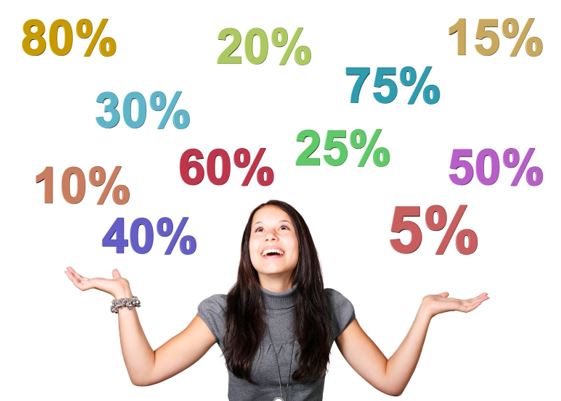What Is Dynamic Pricing Strategy?
Dynamic pricing strategy, sometimes also called demand-based pricing, refers to the strategy of continuously adjusting products’ prices based on a number of real-time factors, such as inventory levels, time of day, current competitive prices, shopper location, etc.
Common examples of businesses that use dynamic pricing include airlines, mortgage lenders, and even gas stations. Airlines might raise ticket prices on the remaining few seats available on a flight, or raise all prices during the holidays or high-demand seasons. Mortgage companies frequently adjust their rates for borrowers based on larger economic factors, such as changes to the Federal Reserve’s fed funds rate, and according to the details of a loan application, such as a borrower’s credit rating. Gas stations change the per-gallon price of fuel as the price of oil fluctuates.
With eCommerce software becoming both more sophisticated and more readily available, many brands and retailers are finding it easier to implement an algorithm-based dynamic pricing strategy to sell their own products. This strategy can be a boon to sellers.
The Major Advantage of Dynamic Pricing Strategy
It can let you price your products strategically on a case-by-case basis.
Consumers today have both the tools and the savvy to comparison shop online. That means if your brand sells directly to consumers — either through your own eCommerce site or through marketplaces like Amazon, or both — you need to keep in mind that your potential customers will likely be researching your pricing, in real-time, against the prices of your competitors’ products.
With the right dynamic pricing strategy, and real-time data about pricing across your market, you can adjust your prices to stay competitive with the similar products your potential customers are likely considering.
Dynamic pricing also lets you use data on your inventory levels, the geo-location of shoppers, and other key information to automatically set the prices that the data suggest will both resonate with shoppers and maximize your profit margins.
One Potential Risk with Dynamic Pricing Strategy
It can lead to MAP pricing violations and damage to your brand.
For the same reasons it can benefit your brand if you sell directly to consumers, dynamic pricing can also be a valuable strategy for your retail partners to use.
In many cases, this will not pose any danger to your brand. One of your resale partners might use an algorithm, for example, to dynamically raise its prices on the few remaining items of your inventory it has in stock. Or perhaps the company will adjust its prices down or up slightly for shoppers viewing your products online from different geographical regions. As long as these dynamic price changes don’t violate your MAP pricing policy, this shouldn’t be a problem.
But retailers selling your products can also use real-time market data to monitor the prices their competitors — including your other retail partners, as well as unauthorized merchants selling your inventory — and can then adjust their advertised prices accordingly. This, too, isn’t necessarily a problem, unless their price drops take the products’ advertised prices below your MAP levels. Then you have a problem which often results in a quick race to the price bottom.
Actually, then you have several problems: the MAP violations themselves, as well as the risk that other retailers will see those violations before you can address them and likewise drop their own prices. This can lead to all sorts of negative outcomes, including loss of key retailers, difficulty finding new reputable resale partners, and long-term damage to your brand’s reputation in the market.
Solution: The Right MAP Enforcement App
You can reap the bottom-line benefits of a dynamic pricing strategy for your company, and even allow your retailers to do the same, without risking harm to your brand. The answer is to implement the right MAP pricing enforcement platform.
I say “the right” platform, and not just any app for MAP enforcement, because a best-in-class application will do more than just monitor and help you enforce your company’s Minimum Advertised Price policy — although it will definitely do that as well. The right MAP enforcement software can also help you directly with your dynamic pricing efforts by:
- Tracking your per-item sales velocity across all online channels, which can help you identify the prices that immediately resonate with shoppers, and which create friction.
- Monitoring the online prices of your competitors’ products, so you can adjust your pricing anytime, in real-time.
- Analyzing how price changes to your products are affecting sales, to help you continuously test and search for the highest acceptable prices your various market segments will pay for your products.
Want to learn how the right MAP enforcement app can help with your dynamic pricing strategy? Talk with a TrackStreet solution architect.


